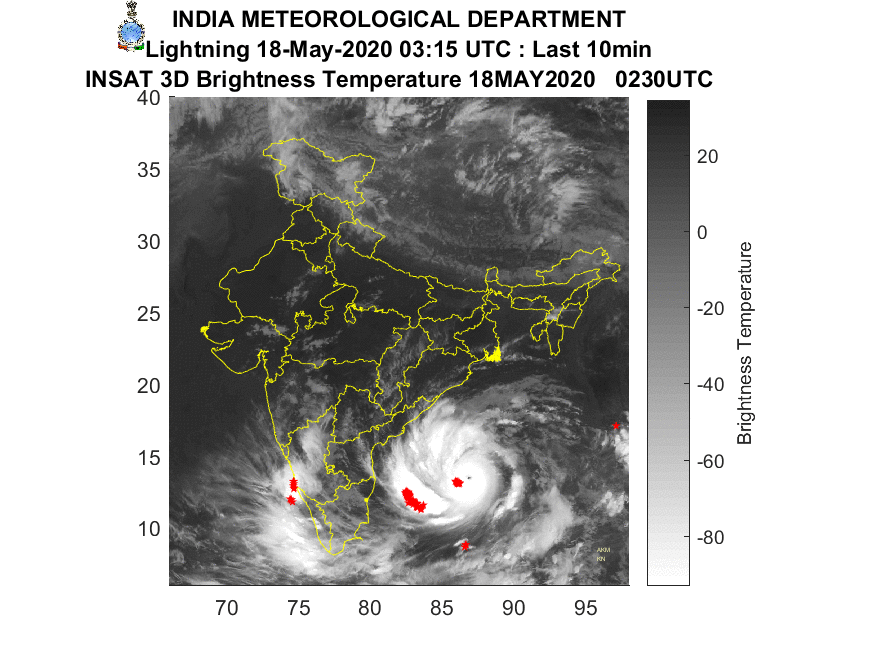Bhubaneswar: The severe cyclonic storm Amphan has intensified into an extremely severe cyclonic storm and lay centred about 829 km south of Paradip (Odisha) and 980 km south-southwest of Digha(West Bengal) at 2.30 hours IST. It is likely to intensify further during the next 6 hours and to move north-northeastwards directions towards the West Bengal coast, said Indian Meteorological Department (IMD).
“The Very Severe Cyclonic Storm ‘AMPHAN’ (pronounced as UM-PUN) over central parts of South Bay of Bengal moved north-northeastwards with a speed of 13 kmph during past 06 hours, intensified into an Extremely Severe Cyclonic Storm and lay centred at 0230 hrs IST of today, the 18th May 2020 over central parts of South Bay of Bengal and adjoining central Bay of Bengal near latitude 12.9°N and longitude 86.4°E, about 820 km nearly south of Paradip (Odisha), 980 km south-southwest of Digha (West Bengal) and 1090 km south-southwest of Khepupara (Bangladesh)” said IMD in its bulletin released at 6.30 am.
“The extremely severe cyclonic storm is very likely to intensify further during next 06 hours. It is very likely to move north-northeastwards and move fast across the northwest Bay of Bengal and cross West Bengal – Bangladesh coasts between Digha (West Bengal) and Hatiya Islands (Bangladesh) during the Afternoon / Evening of 20th May 2020 as a Very Severe Cyclonic Storm” added IMD.
South and Coastal districts of Odisha are likely to experience heavy to very heavy rainfall with squally wind speed reaching 45 to 55 kmph gusting to 65 kmph from Monday evening till 20th of May.
Similarly, the coastal districts of Gangetic West Bengal (East Medinipur, South & North 24 Parganas) are likely to experience light to moderate rainfall at many places with heavy falls at isolated places from 19th May till 21st May. Meanwhile private sector weather agency, Skymet has reported that the clearly marked EYE of about 20km diameter of Amphan is proving its devastating might. The cyclone will remain in the open and deep waters of Bay of Bengal under favourable environmental conditions.

